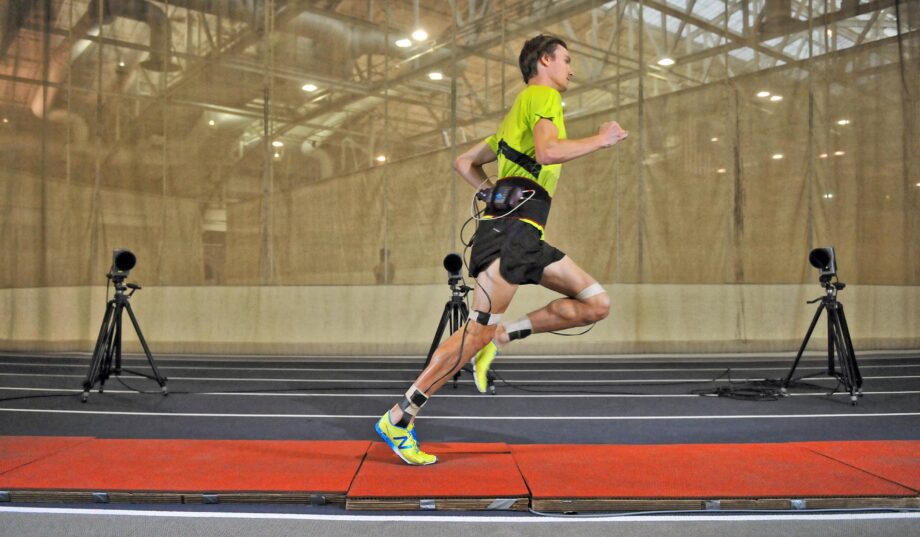Engineers and designers at New Balance are using 3D printing to make shoes for elite runners. They use an EOSINT 395 3D printer from EOS to make custom spike plates, which contains a pattern of spies to give runners more traction as they run. The machine creates the parts out of plastic using nylon powder and laser sintering. The first step is to collect biomechanical data on a runner using different tools. Video capture creates three-dimensional force-vector diagrams of the runner’s feet as they hit a force plate. Pressure sensor’s in the shoe provide pressure data on how the feet are interacting with the shoes. With all this data, New Balance can calculate the best spike pattern, how large they should be, and how they should be oriented. The printer allows them to build spike plates that could not be economically made using traditional manufacturing processes. Currently, the 3D printer makes four spikes at a time, within five to six hours.
One Olympic runner, Kim Conley, wore custom spike plates when she set personal records in two different races, and during her international performance. She credited her success to the improved traction of the shoes while relieving pressure on the outside of her feet. The shoes are made to be 5 percent lighter than traditional track shoes. This can make a significant difference for competitive runners. New Balance aims to refine the 3D printing proves so that they can offer built spike plates or tread patterns to all consumers and athletes. Unfortunately, the foot motions used in running do not carry over to other sports where participants have to change directions quickly. These motions need to be closely studied to determine what performer data needs to be collected and analyzed. Regardless, this is another example of 3D printed shoes bringing improvement to the footwear industry.
Original Article: https://www.machinedesign.com/3d-printing-cad/article/21833883/3d-printing-builds-custom-track-shoes




